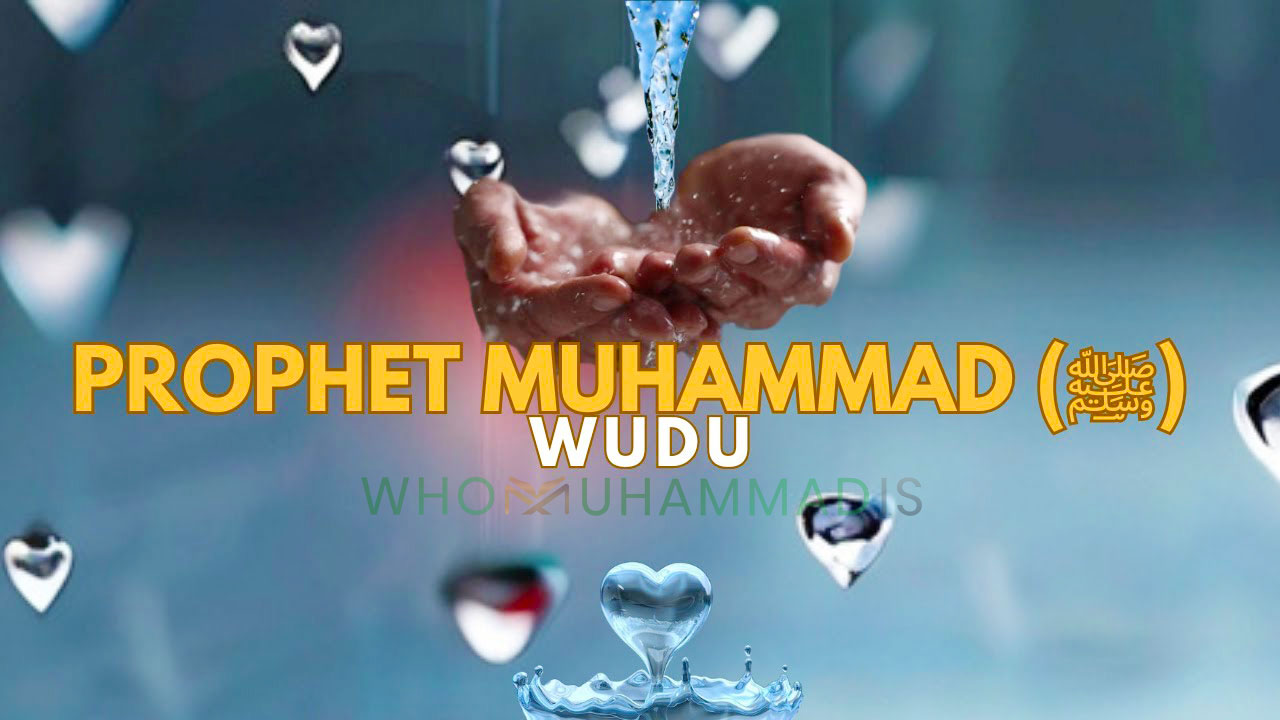Description and Method of Prophet Muhammad's Wudu

-
The Description of the Prophet's Wudu
- 1. Intention (Niyyah)
- 2. Saying Basmalah
- 3. Washing the Hands
- 4. Rinsing the Mouth and Sniffing Water into the Nose (Madmadah and Istinshaq)
- 5. Washing the Face
- 6. Washing the Forearms up to the Elbows
- 7. Wiping the Head
- 8. Washing the Feet, including the Ankles
- 9. Supplication after Wudu
- 10. Order and Continuity
Wudu, known as ablution, is defined as washing specific body parts with water in a prescribed manner as an act of worship to Allah. It is a prerequisite for the validity of prayer, as prayer is not accepted without it, according to the Prophet Muhammad (peace be upon him): "Prayer is not accepted without purification." Therefore, it is incumbent upon Muslims to perform wudu correctly as described by the Prophet Muhammad (peace be upon him). One of the narrations describing his method of wudu is reported by Uthman ibn Affan (may Allah be pleased with him): "Uthman ibn Affan saw the Prophet (peace be upon him) calling for water for ablution.
He poured water onto his hands and washed them three times. Then, he rinsed his mouth, sniffed water into his nose, and blew it out. After that, he washed his face three times and his hands up to the elbows three times. Then he wiped his head and washed each foot three times. Uthman said, 'I saw the Prophet (peace be upon him) performing ablution like this'".
The Description of the Prophet's Wudu
The description of the Prophet's (peace be upon him) ablution (wudu) is outlined in the following steps:
1. Intention (Niyyah)
It is essential for Muslims to have the intention (niyyah) in their heart to purify themselves and remove ritual impurity.
2. Saying Basmalah
It is recommended (mustahabb) that a Muslim say "Bismillah al-Rahman al-Rahim" (in the name of Allah, the Most Gracious, the Most Merciful) before starting wudu.
3. Washing the Hands
The wudu begins with washing both hands up to the wrists three times.
4. Rinsing the Mouth and Sniffing Water into the Nose (Madmadah and Istinshaq)
Madmadah is swishing water in the mouth, and istinshaq is sniffing water into the nose and blowing it out. It is recommended that each of these actions be performed three times. Using a miswak (tooth-stick) during madmadah is also recommended.
5. Washing the Face
The face is washed three times, from the hairline to the chin and from ear to ear, ensuring the entire face is covered, including the beard if it is thick.
6. Washing the Forearms up to the Elbows
Each arm is washed up to the elbows three times. The elbow is included in the washing, and it is sunnah (recommended) to ensure water reaches between the fingers.
7. Wiping the Head
The head is wiped with wet hands, starting from the front of the head, where the hair grows to the nape of the neck, then returning to the starting point. The outer and inner parts of both ears are also wiped once.
8. Washing the Feet, including the Ankles
Each foot is washed three times, starting with the right foot and then the left. The obligatory part of washing extends from the tips of the toes to the ankles, ensuring water reaches between the toes.
9. Supplication after Wudu
After completing wudu, it is recommended for a Muslim to face the Qiblah (direction of prayer) and recite the supplication reported from the Prophet (peace be upon him), declaring faith in Allah and His Messenger.
10. Order and Continuity
It is obligatory for a Muslim to perform the actions of wudu in the sequence taught by the Prophet (peace be upon him), without delaying between washing different body parts.
These steps represent the prescribed manner of performing wudu according to the teachings of Islam as conveyed by the Prophet Muhammad (peace be upon him).